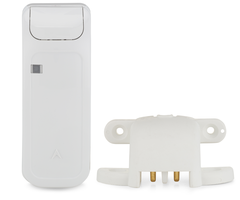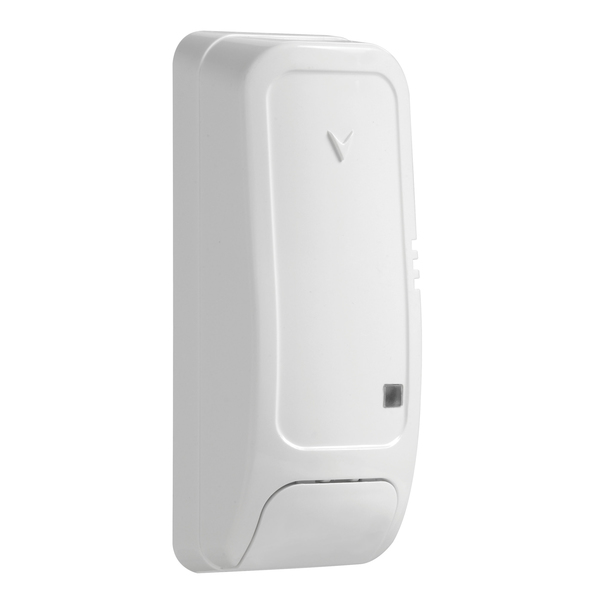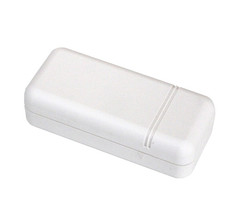Preventing Supervision Trouble On Your 2GIG GC3e
Posted By Michael GorisOne thing we have noticed about the 2GIG GC3e is that it seems to be prone to erroneous Supervision Trouble conditions. This has left some users confused as to why their system zones are not working properly. But luckily, we have some tips to prevent this from happening to you and your GC3e.
 Before we give our three (3) tips to follow, let's make sure we're all on the same page by explaining what Supervision Trouble normally refers to. Supervision Trouble occurs when a system does not receive a periodic "check-in" signal from an enrolled wireless sensor. This is usually either the result of the sensor not being able to send out its check-in signal, or the check-in signal not reaching the intended destination of the alarm panel. Some reasons why the sensor might not send out the signal include the sensor being powered down due to a dead or removed battery, or the sensor being physically destroyed. Some reasons why the the sensor's wireless check-in signal might not reach the alarm panel could include the sensor being moved to a new location in the building, or new obstacles, such as thick walls or large metal structures, being added inside the building. Regardless of the cause, you need to make it so that the sensor's check-in signals successfully reach the panel. Once you do that, you can clear the trouble condition. For GC3e users, you can learn how to clear the trouble condition by reviewing this FAQ.
Before we give our three (3) tips to follow, let's make sure we're all on the same page by explaining what Supervision Trouble normally refers to. Supervision Trouble occurs when a system does not receive a periodic "check-in" signal from an enrolled wireless sensor. This is usually either the result of the sensor not being able to send out its check-in signal, or the check-in signal not reaching the intended destination of the alarm panel. Some reasons why the sensor might not send out the signal include the sensor being powered down due to a dead or removed battery, or the sensor being physically destroyed. Some reasons why the the sensor's wireless check-in signal might not reach the alarm panel could include the sensor being moved to a new location in the building, or new obstacles, such as thick walls or large metal structures, being added inside the building. Regardless of the cause, you need to make it so that the sensor's check-in signals successfully reach the panel. Once you do that, you can clear the trouble condition. For GC3e users, you can learn how to clear the trouble condition by reviewing this FAQ.
But for the 2GIG GC3e, we have seen Supervision Trouble conditions occur, even when the sensor is powered on, successfully enrolled, and in clear communication range of the alarm panel. The issue seems to be particularly prevalent for the encrypted 2GIG eSeries Sensors that were built specifically for new 2GIG Alarm Systems. The good news is that our research has found that these sensor consistently and reliably work as intended, without causing any Supervision Trouble, as long as you follow some basic principles when using and setting up these devices. In addition to making sure that your sensor is powered on and communicating successfully with your 2GIG GC3e Panel, here are three (3) quick and easy tips to keep in mind whenever you are enrolling or configuring your 2GIG eSeries Sensors with your GC3e.

1) Reprogram from scratch when replacing an old sensor. If you have a sensor enrolled with your 2GIG GC3e, and you need to replace it with a new one, then you should remember to clear or delete the zone first, and then reprogram the entire zone from scratch, this time using the new sensor. Many users will need to do this if an old sensor becomes lost or damaged. While it might seem easier to just go in and remove the enrolled Serial Number for the zone, and then auto-learn the new one, this process has been known to cause Supervision Troubles. It's true that a sensor is identified based on its Serial Number, but you can't just delete the old Serial Number, add the new one, and expect everything to work perfectly. This is even the case if you are deleting a sensor and replacing it with one of the exact same model, for the exact same Sensor Type. Instead, take the extra time, delete the zone entirely, and then program it from scratch. For more information on the process, please review this page.
2) Reprogram from scratch when moving a sensor to a new partition. The same rule applies if you are moving an existing sensor to a new partition. This may be something to keep in mind if you are setting up system partitions for the first time, or if you want to change which zones users on a certain partition are able to control. If you are unaware, the 2GIG GC3e supports four (4) partitions, which are referred to as "Smart Areas", and the feature must be enabled at Q69 of System Configuration. More information on Smart Areas and how to set them up can be found here. Regardless, many users think that they can simply change the Partition Assignment within a zone, while keeping all other zone settings the same, and expect it to then function without a hitch. Unfortunately, it isn't that easy, as not completing this process properly may result in Supervision Trouble. Again, you must clear out the zone, and reprogram it from scratch. The only difference is that this time, you must assign the correct partition number, instead of the one it used originally. Alarm Grid invites you to check out this FAQ on switching GC3e Partition Assignments.
3) Always use the correct Equipment Code for 2GIG eSeries Sensors. The last tip we have involves the use of proper Equipment Codes. Before the rise of encryption, the Equipment Code setting was largely symbolic, and as long as an appropriate "equivalent" equipment code was used when programming a sensor, no issues would likely occur. But since the encrypted 2GIG eSeries Sensors use advanced "two-way" communication, using an incorrect Equipment Code can cause unwanted behavior, including Supervision Trouble. This one is a bit easier to fix, as you can often just replace the improper Equipment Code with the correct one in zone programming. If that doesn't work, then you can take the next step of trying to reprogram the entire zone from scratch. But you should be able to clear the trouble condition as normal once the Equipment Code is correct, based on the eSeries Sensor you are using.
The table below shows the Equipment Codes for 2GIG eSeries Sensors:
| Product Name | Equipment Code |
|---|---|
| 2GIG eSeries Smoke Detector (USA) | 2058 |
| 2GIG eSeries CO Detector (USA) | 2860 |
| 2GIG eSeries Tilt Sensor | 2061 |
| 2GIG eSeries Flood Sensor | 2065 |
| 2GIG eSeries Shock Sensor | 2066 |
| 2GIG eSeries Repeater | 2067 |
| 2GIG eSeries Translator | 2068 |
| 2GIG eSeries Water Sensor | 2070 |
| 2GIG eSeries Thin Door/Window Contact | 2862 |
| 2GIG eSeries Recessed Door Contact | 2863 |
| 2GIG eSeries Glass Break Detector | 2864 |
| 2GIG eSeries Pet-Immune PIR Motion Sensor | 2869 |
| 2GIG eSeries Takeover Module | 2873 |
| 2GIG eSeries 4-Button Keyfob Remote | 2866 |
| 2GIG eSeries Outdoor Door/Window Contact | 2865 |
| 2GIG eSeries Panic Switch | 2868 |
| 2GIG eSeries Smoke/CO Takeover Listener | 2069 |
If you are an Alarm Grid monitored customer needing help with your 2GIG GC3e, or if you are interested in starting new service with Alarm Grid, please email our technical support team and security system planners at support@alarmgrid.com. We're here to help you from 9am to 8pm ET M-F. We look forward to hearing from you!














 Next, we'll be looking at flood sensors. These devices use probes to detect water caused by a flood or leak. It only takes a small amount of liquid to activate one of these sensors, so your system will be alerted before any serious damage occurs. Many of these sensors double as temperature sensors, so expect to see quite a bit of cross-over with that section as well. For best results, use your flood sensors in low-plane areas where leaks are likely to occur, such as underneath toilets, water heaters, and in basements. You might also see that some flood sensor have a reporting delay that is used for
Next, we'll be looking at flood sensors. These devices use probes to detect water caused by a flood or leak. It only takes a small amount of liquid to activate one of these sensors, so your system will be alerted before any serious damage occurs. Many of these sensors double as temperature sensors, so expect to see quite a bit of cross-over with that section as well. For best results, use your flood sensors in low-plane areas where leaks are likely to occur, such as underneath toilets, water heaters, and in basements. You might also see that some flood sensor have a reporting delay that is used for 




